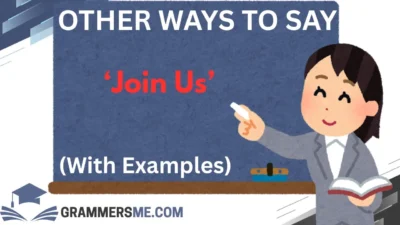Finding the right words to express care, interest, and sincerity when meeting someone can make all the difference. While the phrase “How do you do” is formal and polite, it can feel a bit stiff or outdated in casual settings. Whether you’re looking to start a conversation with warmth, engage more meaningfully, or simply freshen up your social language, these 30 thoughtful alternatives can help you connect in a more personal and approachable way.
What Does “How Do You Do” Mean?
Meaning: “How do you do” is a traditional English greeting used when meeting someone for the first time. It isn’t meant to ask literally how someone is doing, but rather serves as a polite formality.
Detailed Explanation: In British English, it was once common for both people to say “How do you do?” upon introduction — neither expecting a real answer. In American English, however, it has faded into formality and is often replaced with more conversational phrases.
Scenario Example:
- “Hello, I’m Alex. How do you do?”
- “How do you do, Alex? I’m Jordan.”
Best Use: Formal introductions, interviews, or high-society settings.
Not Ideal For: Casual or everyday conversations where more natural expressions are preferred.
Is It Professional/Polite to Say “How Do You Do”?
Yes — but context matters. “How do you do” is certainly polite, but may sound overly formal or old-fashioned depending on your audience. In professional settings like international meetings or ceremonial introductions, it fits well. In more relaxed workplaces or everyday scenarios, softer and more familiar alternatives often feel warmer and more human.
1. Nice to Meet You
Meaning: A warm and simple way to acknowledge a new acquaintance.
Explanation: Shows appreciation for meeting someone without sounding overly formal.
Scenario Example: “Hi, I’m Sarah.” “Nice to meet you, Sarah!”
Best Use: Any setting — professional, casual, or formal.
Not Use: When you’ve already met the person before.
2. Pleasure to Meet You
Meaning: A slightly more formal variant of “Nice to meet you.”
Explanation: Adds a refined touch while staying warm and sincere.
Scenario Example: “It’s a pleasure to meet you. I’ve heard so much about your work.”
Best Use: Job interviews, networking events, business introductions.
Not Use: Overly casual meetups where it might sound too stiff.
3. How’s Everything Going?
Meaning: A conversational way to express genuine interest.
Explanation: It opens the door for a real conversation.
Scenario Example: “Hi there, how’s everything going on your end?”
Best Use: Friendly or workplace settings where you already share a context.
Not Use: Formal first-time meetings.
4. Good to See You
Meaning: Shows warmth and positivity, especially for someone you’ve met before.
Explanation: It acknowledges the value of the interaction and strengthens rapport.
Scenario Example: “Good to see you again, Martin!”
Best Use: Familiar settings, reunions, or casual work encounters.
Not Use: First-time meetings.
5. What’s New With You?
Meaning: Indicates curiosity and connection.
Explanation: Encourages a more personal and engaged conversation.
Scenario Example: “Hey! What’s new with you these days?”
Best Use: Friendly environments, catch-ups.
Not Use: Formal or business-first conversations.
6. How Are Things?
Meaning: A breezy, relaxed way to check in.
Explanation: Works well when you want to keep it light and open-ended.
Scenario Example: “Hi Jack, how are things going?”
Best Use: Informal chats, small talk.
Not Use: Initial professional greetings.
7. How’s It Going?
Meaning: Modern, casual, and easygoing greeting.
Explanation: Shows you’re laid-back and open to conversation.
Scenario Example: “Hey, how’s it going?”
Best Use: Everyday conversations, friends, colleagues.
Not Use: Formal introductions.
8. Great to Finally Meet You
Meaning: A warm greeting when meeting someone you’ve heard of before.
Explanation: Signals appreciation and positive expectation.
Scenario Example: “Great to finally meet you, I’ve read your emails!”
Best Use: Meetings after remote interaction.
Not Use: When no prior connection exists.
9. Hi, I’ve Heard So Much About You
Meaning: A kind way to acknowledge someone’s reputation or presence before meeting them.
Explanation: Builds instant familiarity and interest.
Scenario Example: “Hi, I’ve heard so much about you from the team!”
Best Use: Networking, mutual introductions.
Not Use: Random or unexpected encounters.
10. Hey There!
Meaning: Super friendly and approachable.
Explanation: Low-stakes, cheerful, and casual.
Scenario Example: “Hey there! I’m Jules.”
Best Use: Social settings, informal work environments.
Not Use: Business formal occasions.
11. What’s Going On?
Meaning: Modern and casual alternative for a greeting.
Explanation: Shows relaxed energy and openness.
Scenario Example: “Hey, what’s going on?”
Best Use: Peer-to-peer greetings.
Not Use: Meetings with senior professionals.
12. Lovely to Meet You
Meaning: Adds charm and sincerity.
Explanation: Slightly more emotional and expressive than “Nice to meet you.”
Scenario Example: “Lovely to meet you, you have a wonderful presence.”
Best Use: Social and semi-professional settings.
Not Use: Too casual for highly formal settings.
13. It’s a Pleasure
Meaning: Refined and professional.
Explanation: Keeps the tone formal without feeling stiff.
Scenario Example: “It’s a pleasure to speak with you.”
Best Use: Formal interviews, events.
Not Use: Everyday friend conversations.
14. Hi, I’m [Name] — And You Are?
Meaning: A gentle way to introduce yourself while prompting the other person.
Explanation: Works great for breaking the ice.
Scenario Example: “Hi, I’m Kevin — and you are?”
Best Use: Quick intros in social events.
Not Use: If someone already introduced the person.
15. Glad We Finally Meet
Meaning: Acknowledges anticipation in meeting someone.
Explanation: Adds warmth to first-time introductions after prior exchanges.
Scenario Example: “Glad we finally meet — I loved your last article!”
Best Use: Online-to-offline meetings.
Not Use: Cold intros.
16. How Have You Been?
Meaning: A friendly check-in for someone you’ve previously met.
Explanation: Shows memory and care.
Scenario Example: “Hey, how have you been? It’s been a while.”
Best Use: Reconnecting conversations.
Not Use: First-time meetings.
17. What Brings You Here?
Meaning: Invites someone to share their purpose in a setting.
Explanation: Great conversation starter.
Scenario Example: “Hey, what brings you to this workshop?”
Best Use: Events, social gatherings, meetups.
Not Use: Already explained or inappropriate setting.
18. How’s Life Treating You?
Meaning: Friendly and emotionally aware.
Explanation: Goes beyond “how are you” with a touch of care.
Scenario Example: “How’s life treating you lately?”
Best Use: Friends, empathetic conversations.
Not Use: Strict professional settings.
19. Long Time No See
Meaning: Expresses familiarity and excitement to reconnect.
Explanation: A classic greeting to rekindle communication.
Scenario Example: “Hey, long time no see! How’ve you been?”
Best Use: Reunions, old friends.
Not Use: Meeting for the first time.
20. It’s Good to Finally Put a Face to the Name
Meaning: Perfect for meeting someone you’ve only interacted with online or over email.
Explanation: Shows recognition and connection.
Scenario Example: “So nice to put a face to the name — I’m Claire.”
Best Use: Business meetings, remote colleagues.
Not Use: In-person first meetings without background.
21. Welcome Aboard!
Meaning: Friendly greeting for newcomers.
Explanation: Warm and inviting.
Scenario Example: “Welcome aboard! We’re excited to have you with us.”
Best Use: New employee introductions.
Not Use: Non-work scenarios.
22. Hey, How Are You Holding Up?
Meaning: Checks on someone’s emotional well-being.
Explanation: Empathetic and supportive.
Scenario Example: “Hey, how are you holding up with all the changes?”
Best Use: Sensitive or emotional situations.
Not Use: First-time meetings or casual intros.
23. Hope You’re Doing Well
Meaning: Kind and respectful opening.
Explanation: Shows thoughtful consideration, especially in written form.
Scenario Example: “Hi, hope you’re doing well. I wanted to follow up on…”
Best Use: Emails, messages, soft starts.
Not Use: In-person greetings.
24. Hi There, New Face?
Meaning: Friendly and playful.
Explanation: Sparks conversation with a light tone.
Scenario Example: “Hi there, new face? I’m Max.”
Best Use: Parties, open events.
Not Use: Corporate spaces.
25. Hey, I Don’t Think We’ve Met Yet
Meaning: Signals curiosity and willingness to connect.
Explanation: Disarming and authentic.
Scenario Example: “Hey, I don’t think we’ve met yet. I’m Lila.”
Best Use: Social or team environments.
Not Use: Already introduced person.
26. Welcome to the Group!
Meaning: Inclusive and warm.
Explanation: Offers a sense of belonging.
Scenario Example: “Welcome to the group! We’re thrilled to have you here.”
Best Use: Newcomers, casual settings.
Not Use: One-on-one formal intros.
27. Good Day to You
Meaning: Formal yet kind.
Explanation: Traditional greeting with respectful flair.
Scenario Example: “Good day to you, sir. My name is Henry.”
Best Use: Formal contexts, classic settings.
Not Use: Modern casual environments.
28. Hey, What’s Your Story?
Meaning: Creative and open-ended.
Explanation: Invites personal sharing.
Scenario Example: “Hey, what’s your story? How’d you end up here?”
Best Use: Deep conversations, networking.
Not Use: Very brief or surface-level greetings.
29. I’ve Been Looking Forward to Meeting You
Meaning: Expresses excitement and respect.
Explanation: Great for first-time face-to-face connections after anticipation.
Scenario Example: “I’ve been looking forward to meeting you. You come highly recommended!”
Best Use: Job interviews, mentorships.
Not Use: Unexpected or chance encounters.
30. So This Is the Famous [Name]!
Meaning: Playfully shows admiration or recognition.
Explanation: Great icebreaker if someone is known or talked about.
Scenario Example: “So this is the famous Jamie! We’ve heard amazing things.”
Best Use: Fun, casual environments.
Not Use: Unfamiliar or unverified meetings.
Conclusion
The words we choose matter. Swapping out “How do you do” for phrases that better reflect your tone, warmth, or the relationship you have with the person can transform a simple greeting into a genuine connection. These alternatives give you a variety of ways to show thoughtfulness, whether you’re meeting someone for the first time or reconnecting with a familiar face. As someone who’s worked in both formal and creative environments, I’ve found that language really is the bridge to meaningful connection.
Frequently Asked Questions
1. Is “How do you do” still used today?
Yes, but mostly in very formal or traditional settings. Most people now prefer warmer or more natural alternatives.
2. What’s the difference between “How do you do” and “How are you?”
“How do you do” is a formal greeting with no expectation of an answer, while “How are you?” is more conversational and seeks a response.
3. Can I use “How do you do” in a job interview?
You can, but it may sound overly formal. Saying “It’s a pleasure to meet you” is usually better received.
4. What’s the most casual way to greet someone new?
“Hey there!” or “Hi, I’m [Name]” are great casual options.
5. What’s the best way to greet someone over email?
“Hope you’re doing well” or “Nice to connect with you” are polite and professional choices.




